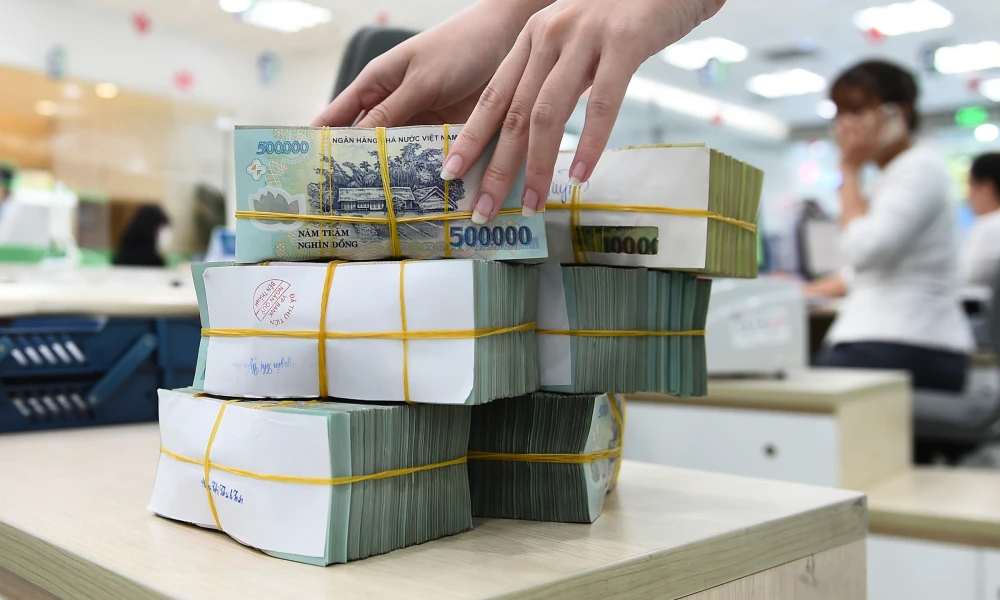
However, the current situation indicates that businesses are encountering difficulties in obtaining credit capital, and there are uncertainties about the economy's capacity to absorb this capital flow.
JOURNALIST: - Sir, currently, some major banks have reduced both deposit and lending interest rates. In your opinion, what is the likelihood of businesses accessing this capital flow for recovery?
Mr. PHAN LÊ THÀNH LONG: - With certain banks slightly lowering interest rates, there are a few considerations to bear in mind. Firstly, it remains unclear whether lending interest rates will decrease and to what extent when deposit interest rates decrease. In theory, a reduction in deposit interest rates can serve as the basis for a decline in lending interest rates. However, in practice, lending rates are not overly dependent on deposit rates but rather on the risk factors associated with the business. This implies that when extending credit to specific businesses, commercial banks will assess creditworthiness. Accordingly, if a business carries a high risk, lending interest rates may not see a reduction. Observing the current economic and business landscape, I perceive that the overall health of businesses is not stable, with many facing difficulties. Therefore, the assessment points towards increased risks.
Secondly, credit capital is essentially a commodity with both quantity and price. Businesses aim to boost credit capital, indicating increased borrowing and, consequently, a decrease in lending interest rates and costs. However, this is only part of the equation. The crucial factor is that the actual increase must stem from the genuine need for credit capital within the business. While reduced lending rates create conditions for businesses to augment their quantity—enhancing accessibility to credit at lower costs—it heavily depends on the effectiveness of their operations, the existence of output for production, and the necessity to expand production investment. Only when there is a genuine need for credit capital will it contribute to the continuous circulation of cash flow in the economy. It is then that the credit capital injected into the market by banks becomes meaningful, correct, and successful.
Assessing the current reality, I believe this potential is still limited due to a sharp decline in demand for export orders. The primary export markets for Vietnam, such as the US or the EU, are currently unable to stimulate their economic recovery and increase demand for import orders significantly. This situation resonates with the domestic economy's actual state. If the domestic economy rebounds, the demand for credit loans by businesses will naturally rise. In the present context of a sluggish economic recovery, where production still encounters numerous challenges and the demand for loan capital remains low, reducing interest rates may not truly realize the anticipated meaning and impact.
- How long do you think banks will be able to continue reducing interest rates, and do you anticipate a reversal in the near future, sir?
- Predicting the duration of banks' ability to lower interest rates and the likelihood of a reversal involves various factors. Based on the State Bank of Vietnam's (SBV) operating interest rates, it appears that in 2024, there may not be much room for commercial banks to further reduce interest rates, as it can be considered to have reached the "bottom zone." The sustainability of low interest rates depends on a combination of internal and external factors. Internally, a successful economic recovery with improved imports and exports, coupled with decreasing inflation, could drive up the demand for loans and exert pressure for interest rates to rise again. Externally, central banks' interest rate policies will adjust based on specific economic developments, with the implementation of monetary policy by the US Federal Reserve (Fed) having a direct impact on economies, including Vietnam.
As for whether domestic interest rates still have room for further decreases, I find it challenging. The State Bank faces difficulties in adjusting "upstream" with the global situation, particularly as the Fed considers whether to reduce interest rates amidst rising inflation in the US. Notably, the interest rate differential between the US and Vietnam has attracted a substantial cash flow from Vietnam into the US market where interest rates are higher. In 2023, the Vietnamese stock market witnessed net selling by foreign investors exceeding $1 billion, driven by these interest rate differences.
Regarding the idea of interest rates "reversing" to increase again, I consider this unlikely. The government has clearly outlined goals and is taking drastic measures this year to support economic growth and development, making an increase in interest rates an improbable option under these circumstances.
- Thank you very much.




















